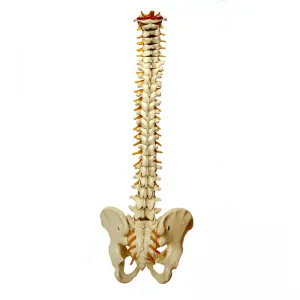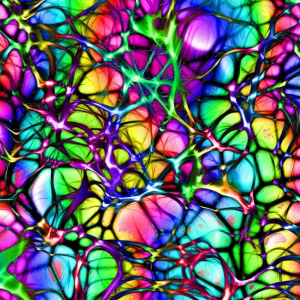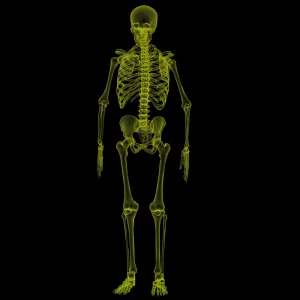Tune Up Your Brain in Austin TX
TUNE UP YOUR BRAIN in Austin TX

NEW STUDIES IN NEUROSCIENCE SUGGEST CHIROPRACTIC CARE AFFECTS MUCH MORE THAN BACK AND NECK PAIN. AN EMERGING BODY OF EVIDENCE SHOWS THAT SPINAL ADJUSTMENTS ALSO IMPROVE YOUR BRAIN FUNCTION.
There’s a lot of buzz about a relatively unknown figure: neurophysiologist and chiropractor Heidi Haavik, who is pioneering a whole new field of research into what happens to a person’s brain when a chiropractor adjusts their spine. Chiropractic care in Austin TX is the most popular alternative medical treatment for more than a century, used by 30 million people in the US alone each year.
“There is so much more to chiropractic care than back and neck pain, and headaches,” enthuses Haavik, who studied neuroscience after graduating from the New Zealand College of Chiropractic and is now focusing on research.
“Haavik’s research may finally explain scientifically the amazing results chiropractors have in clinical practice,” says Ross McDonald, a practicing chiropractor and president of the Scottish Chiropractic Association.
The neuroscience studies explore the underlying mechanism of those results—how the spine and central nervous system (CNS) are interconnected and ‘talk’ to each other, and how dysfunction in the spine can affect health and well-being.
One of Haavik’s studies, published this year in the journal Brain Sciences, looked at the effect of chiropractic adjustments in 28 patients with “subclinical” pain—those with a history of intermittent back or neck ache or stiffness for which they were never treated—but who were in pain the day of the experiment. On examination, all had tender spots and restricted joint movement in their spines.
Compared with ‘sham’ adjustments, chiropractic spinal adjustments of these people induced significantly greater brain activity, or ‘cortical excitability’ (which has to do with neuroelectrical signals produced when brain or peripheral muscles are stimulated), as measured by transcranial magnetic stimulation (TMS), which uses magnetic fields to stimulate nerve cells in the brain, as well as arm and leg muscle strength.

Increases in muscle strength have proved to be driven by brain activity resulting from spinal manipulation and not by any changes made to the spinal cord itself. This offers a range of possibilities for, say, recovering muscle strength after nervous-system injuries. As the study concluded, “spinal manipulation may, therefore, be indicated” for patients who have lost muscle tone or are recovering from a stroke or from orthopedic surgery that affects the muscles. It may even be of interest to people who participate in sports.
These findings have confirmed a 2015 study showing that, following a full-spine chiropractic adjustment session, voluntary leg muscle strength in study participants increased by 16 percent, while electrical activity readings from the measured muscle increased by nearly 60 percent. But most notably, the researchers (from the Centre For Chiropractic Research In New Zealand) discovered a 45 percent increase in the reflex pathway ‘drive’ from the brain to the muscle (an indicator of the ability of the brain to activate it). By contrast, the control participants who underwent the sham adjustment actually lost strength and brain drive to the measured muscle.
This same Auckland-based team, led by Haavik and two colleagues, is now embarking on some groundbreaking research involving brain-body communication in stroke patients.6 A preliminary study tested the effect of a single chiropractic adjustment on 12 stroke patients and found that it increased leg muscle strength by an average of 64 percent and brain drive to the limb by more than 50 percent. In comparison, both measurements fell after the sham adjustments in the controls.
Ordinarily, you wouldn’t expect to see muscles gain strength after being asked to repeatedly resist something, because muscles become fatigued. Now that we have the technology to objectively measure an increase in muscle strength after an intervention, Haavik says, these results suggest that “chiropractic care is not only preventing fatigue but making [muscles] even more efficient at producing force.”
The potential results of the new study could have a significant impact on the role of chiropractic care in people who have reduced muscle function as a result of stroke, she says.
INJURY RISK in Austin TX
One interesting recent study by Haavik and her colleagues looked specifically at the impact of chiropractic on the risk of falls among older people.
Falling is a significant cause of death, injury, and health decline in the elderly, with about 30-40 percent of older adults who still live independently suffering from at least one fall each year as they age.
In this randomized controlled trial, half of the group of 60 community-dwelling people, aged over 65 and living in Auckland, received 12 weeks of chiropractic care (two visits per week), while the other half received the ‘usual care,’ which didn’t include seeing a chiropractor.
The patients were tested on their proprioception (in this case, their awareness of where their ankle joint was positioned), postural stability and ability to process ‘multisensory’ information—a sound-induced flash illusion test, using flashing lights and beeps. This test is used to screen for fall risk, as it measures how well people can process two different kinds of stimuli at the same time. The participants were also given a sensorimotor function test, which measured their ability to move their feet in response to a panel that suddenly lit up on the floor, plus a questionnaire based on their self-perceived health-related quality of life.
Over the 12 weeks of the study, the group receiving chiropractic care showed significant improvement in ankle joint position sense, meaning their brains may have become more accurately aware of what was going on in their feet; they were also able to react and move their foot onto the illuminated panel on the floor more quickly than before the chiropractic care. These improvements were not seen in the control group.
The chiropractic patients were 13 percent better able to accurately report the correct number of flashes with the corresponding number of beeps—meaning they had lowered their risk for falls.
What’s more, at the end of the study, the participants who had received the chiropractic care reported a 2.4-fold increased improvement in the quality-of-life questionnaire compared with the controls.
YOUR PLASTIC BRAIN
Haavik is now trying to explain how chiropractic achieves all this, and why restoration of proper movement is able to so profoundly affect the brain and overall health.
The CNS—the brain and spinal cord—and all the nerves beyond the CNS (the peripheral nervous system, or PNS) is a complex network made up of as many as 10 billion nerve cells (also called ‘neurons’) and 60 trillion synapses—tiny little junctions between neurons that mediate the ‘talk’ across highly specialized neural circuits via chemicals called ‘neurotransmitters.’ Indeed, nerves feed out of each segment of the spine like strands of spaghetti and facilitate communication back and forth with various regions of the body.
Everything we do—from our basic motor reflexes to our capacity to experience abstract thoughts and feelings—relies on the precision of the computational processes performed by these CNS and PNS neural circuits. They, in turn, depend on having healthy excitatory and inhibitory systems.
A neuron gets ‘excited’ when it’s ‘talked to’ loudly enough, or stimulated, and this sends an electrical message down one of the neuron’s extensions (called ‘axons’), so allowing it to talk to another nerve cell by releasing more neurotransmitters at the synapses.

Such talk happens all the time as input comes in from our external senses (eyes, ears, mouth, nose and touch), as well as through an inner ‘map’ of the location of our muscles and joints in three-dimensional space relative to each other (proprioception), as the brain carries out its decisions and functions.
Contrary to decades of scientific dogma, a recent wave of research has shown that the brain is actually highly adaptable to its ever-changing environment throughout life. It achieves this by keeping an up-to-date tab on its sensory inputs and its internal map of the self. This ability to adapt is known as ‘neural plasticity.’
Haavik likens the plasticity of the CNS to the subtle changes in the bed of a flowing stream. “You can never really step into the same river twice; the water, stones, and silt of the riverbed are constantly changing,” she says. Likewise, your brain is changing with every thought and every execution and is in a constant state of flux.
In fact, she believes her research demonstrates that vertebral subluxations (dysfunctional spinal segments; see box, page 32) lead to a breakdown in the way the brain perceives and controls the movement of the spine. And this spinal dysfunction doesn’t just affect how the brain then perceives and controls the spine, but also how it perceives and controls other parts of the body as well.
When the brain gets even slightly wrong information, it builds a faulty map that can impede neural signaling as effectively as damped sensory input—like wearing a blindfold or losing the sense of taste. And that translates to faulty functioning.
Chronic pain and neurodegenerative disorders have been linked to these faulty perceptions by the plastic brain.”Pain and conditions with other symptoms don’t necessarily happen all of a sudden for no reason. They can slowly develop without your awareness, a bit like a thousand straws on a camel’s back before it breaks,” says Haavik. “Only when the last straw is added do you feel the effect.”
Haavik’s team hypothesizes that spinal adjustments that restore normal movement also restore more normal data input from the spine to the brain. This, in turn, allows the spinal cord, brain stem, and brain to process any incoming information more coherently.
“We believe these to be the mechanisms by which adjustments of vertebral subluxations can improve nervous system function, as observed daily in chiropractic practices all around the world.”
While the New Zealand researchers are reluctant to speculate on immunity, an emerging body of research is demonstrating the interconnectedness of both the nervous and immune systems too. An entirely new lymphatic system in the brain was only discovered in 2015 by a team of researchers at the University of Virginia,10 which highlights how limited our understanding of the brain, and the effect of the nervous system on global health, still is. It also raises further questions about how improving one system can lead to an improvement in the other—and so perhaps why some people experience benefits to their immune-mediated disease with chiropractic manipulations.
“What is becoming clear is that chiropractic care seems to impact our brain’s inner reality by restoring the proper processing and integration of sensory information, which alters the way our brain controls our body,” says Haavik.
“It’s so exciting to see that there are other possible ways now to explain the effects of chiropractic that are actually congruent with current neuroscience,” she adds. “It’s actually more profound and powerful than we could have ever thought.”
THE MANY FACES OF CHIROPRACTIC
There are two schools of thought in chiropractic: the ‘mechanics,’ who claim it should be absorbed into mainstream medicine as a standardized treatment for back and neck pain, and the ‘vitalists,’ who believe that the treatment is much more far-reaching, as they’ve seen it help cases of fatigue, joint pain, migraines, allergies, asthma, bedwetting, and even infertility.
The latter philosophy is radically different from the current medical paradigm. “The body has an innate ability to heal, provided there is no interference,” says Gilles LaMarche, vice president of professional relations at Life University in Atlanta, Georgia, the world’s largest chiropractic college. “It is self-developing, self-maintaining, and self-healing.”
In this vitalistic view of chiropractic, when you get an infection or scrape your knee, the best practitioner merely assists the body in getting on with its own spontaneous and spectacular business of healing itself.
The chiropractor’s job, as vitalists see it, is to remove any interference in the body at the level of the spine, which they consider central.
“Conventional medicine doesn’t interpret symptoms as we interpret symptoms,” explains LaMarche from his end of chiropractic.
He sees fever, for instance, as one of the body’s natural mechanisms to fight infection: raising the body’s temperature kills bacteria and viruses, and facilitates other immune functions.
“Many doctors see fever as bad, as something to reduce,” he says, “and they give Tylenol [acetaminophen], not considering it as a toxin that is actually going to stay in the liver and therefore interfere with healing and health.”
HOW CHIROPRACTIC CHANGES THE BRAIN
So what’s going on in the Brain after a chiropractic adjustment that could be increasing muscle strength in stroke patients? As a 2016 study from Aalborg University Hospital in Denmark demonstrated, a single chiropractic adjustment helps to improve something called ‘somatosensory integration’ (when the brain receives accurate sensory input, so allowing it to properly organize and execute subsequent behaviors).
Such a change mostly happens in the prefrontal cortex, that part of the brain known to be a key player in executive functions. It’s a sort of command control center, integrating and coordinating the multiple neural inputs from a constantly changing environment to solve problems and achieve goals.
“Chiropractic care, by treating the joint dysfunction, appears to change processing by the prefrontal cortex,” the authors conclude.
So, while some chiropractors (and their patients) may have thought their adjustments were making changes locally and directly from the spine, in fact, the change is apparently effected indirectly by being sent to ‘central command’ (the brain), then redirected back down neuronal chains to give the perception of reduced pain as well as other benefits.
“This suggests that chiropractic care may, as well, have benefits that exceed simply reducing pain or improving muscle function and may explain some claims regarding this made by chiropractors,” the study researchers say.
These claims include the ability of adjustments to increase muscle strength and core stability and improve reaction time and proprioception (your awareness of your body’s position in space), reducing the risk of injury.
WHAT IS A SUBLUXATION?

In 1895 in Iowa, the founder of chiropractic, Daniel David Palmer, claimed to have restored the hearing of deaf janitor Harvey Lillard by adjusting the part of his spine that Palmer could feel was “out of alignment.”
From this, he devised a theory that ‘misaligned’ or ‘out-of-place’ spinal segments interfere with proper nerve function, and that ‘adjusting’ these segments back to their normal position relieves pressure on the nerves and restores neural function.
Chiropractors assess spines for areas where some of the small muscles that attach to the individual vertebrae have become tight due to injury, hunching over cell phones and computers, or simply overuse. When these tight muscles cause the vertebrae—the small bones that make up the spine—to twist, certain parts of the bones can protrude and feel ‘misaligned’ or ‘stuck.’ Chiropractors call it a vertebral ‘subluxation’ or ‘joint restriction.’
“It is more than a bone is functioning or moving in a less than ideal way—in a manner that is not ‘normal’ for the body,” says Heidi Haavik.
And chiropractors counter this abnormality by ‘adjusting’ it. “We don’t really put bones back in place when we adjust the spine,” she explains. The aim of the short, quick movements of chiropractic adjustments to the spine is to restore its natural range of movement.
HOW TO FIND A GOOD CHIROPRACTOR
All chiropractors must attend a licensed chiropractic college or university, and undergo at least four years of training in anatomy, neurology, physiology, radiology, pathology, clinical diagnostics, and clinical nutrition, as well as physiotherapy and chiropractic techniques.
In most states, chiropractors must pass a national exam to ensure competency as well as fulfill additional licensing requirements, including passing a state-level test.
Apart from these legal requirements, chiropractors have a broad range of approaches, specialties, and techniques. Make sure to choose a chiropractor who:
- Meets your particular needs. Some chiropractors take a biomechanical approach, or treat a narrow range of conditions and only see people when they have a problem, like pain, while others take a ‘wellness’ approach and treat people to prevent problems. Many chiropractors have special areas of focus: sports injuries, pregnancy, children, or even functional medicine, testing for metabolic deficiencies such as low vitamin D levels and prescribing supplements.
- It has a good reputation. It’s worth considering if other people have had good results.
- Talks with you at no cost to discuss your needs and their skills and services, and employs techniques that suit you. Some chiropractors use manual adjustments only, while others use devices like drop-tables—examination tables that move when the chiropractor adjusts so the impulse is delivered by the release-action of the table—and activators—handheld tools that resemble a tire-pressure gauge and are spring-activated to deliver small and precisely controlled impulses to areas like the cervical (neck) spine. Some may also be trained in techniques like acupuncture; dry needling (acupuncture needles are inserted in muscle tissue to stimulate the release of ‘trigger points,’ where muscles have gone into spasm); and active release technique (ART), which also targets contractions of muscles, ligaments, and tendons to reduce joint stress.
- Carries out a thorough assessment before beginning treatment. A medical history and physical exam should be done to rule out conditions that need a further referral or should not be treated by chiropractic. A chiropractor is trained to perform and read X-rays, which are sometimes required, but only if they meet standardized criteria.
- Gives you clear outcome measures to gauge improvements, such as less pain or an overall improved sense
of well-being. - It gives you enough time and attention. The best practitioner is also a coach or partner who can help you achieve your best state of health. Only choose someone who truly supports you.
Monday
9:00am - 1:00pm
3:00pm - 6:00pm
Tuesday
9:00am - 1:00pm
Wednesday
9:00am - 1:00pm
3:00pm - 6:00pm
Thursday
9:00am - 1:00pm
Friday
Closed
Saturday & Sunday
Closed
Chiropractic Arts Center of Austin, P.C.
4131 Spicewood Springs Rd L-3
Austin, TX 78759



